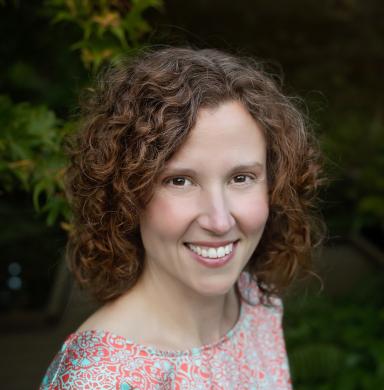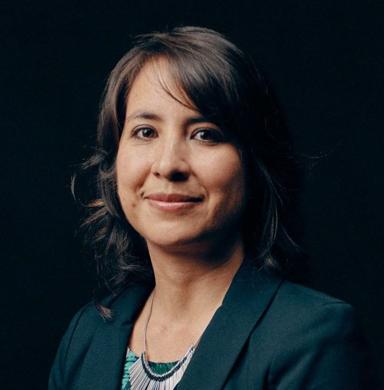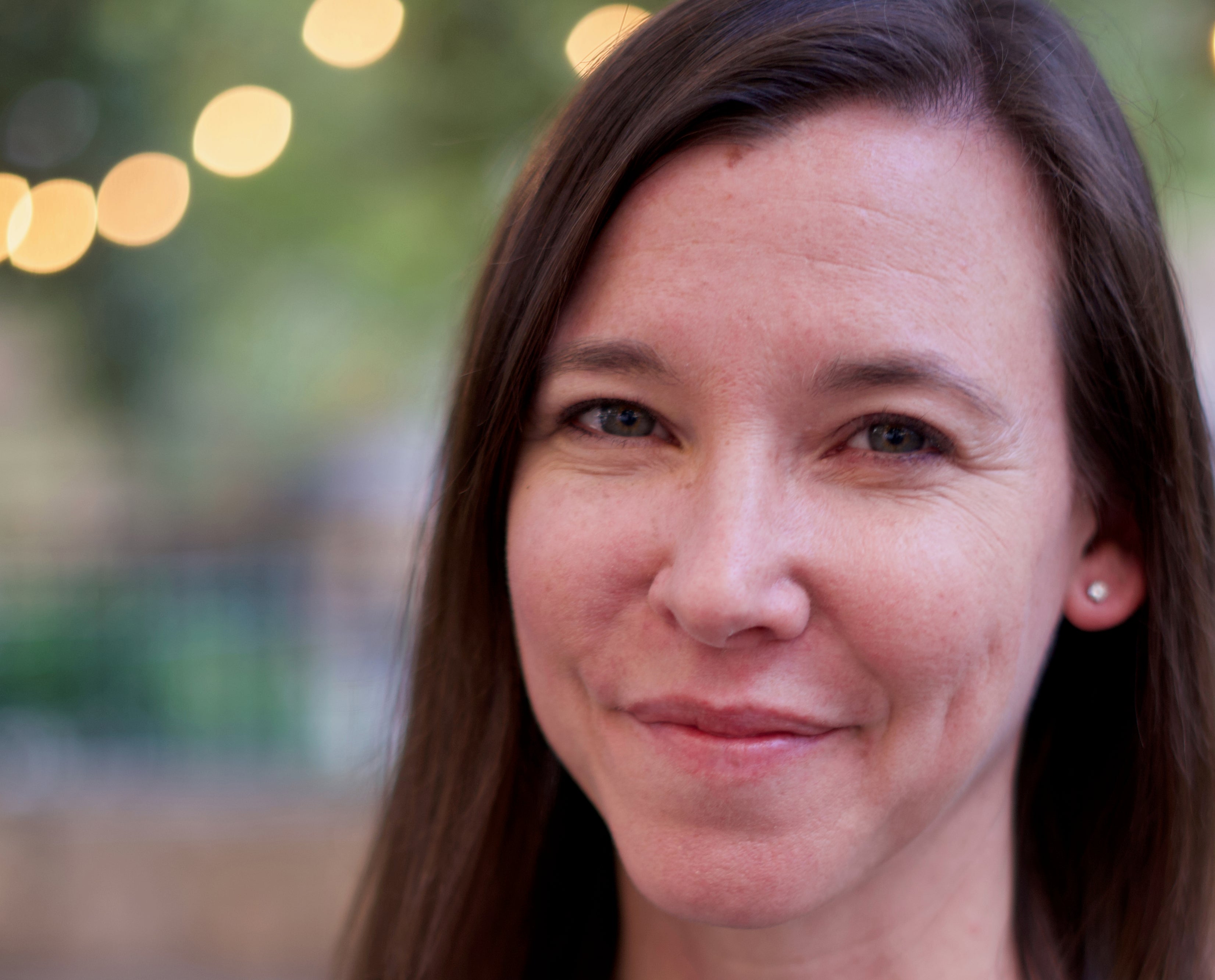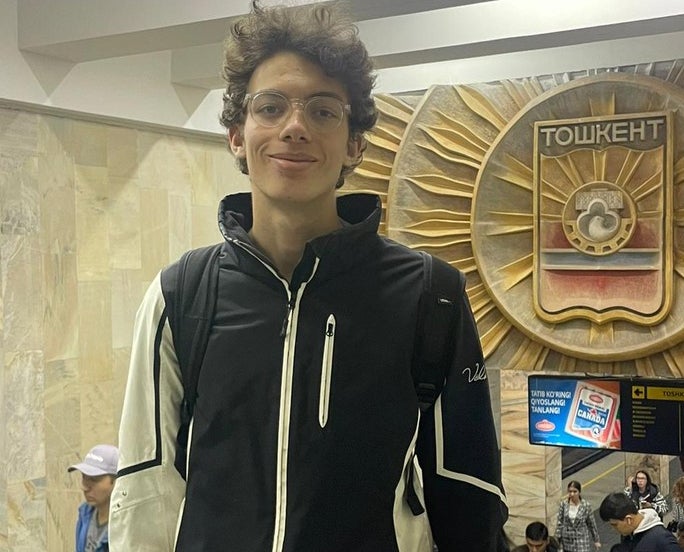Casa de Paz Learning Community Offers CAHSS Students an Inside View of Immigration, Helps Transform Lives
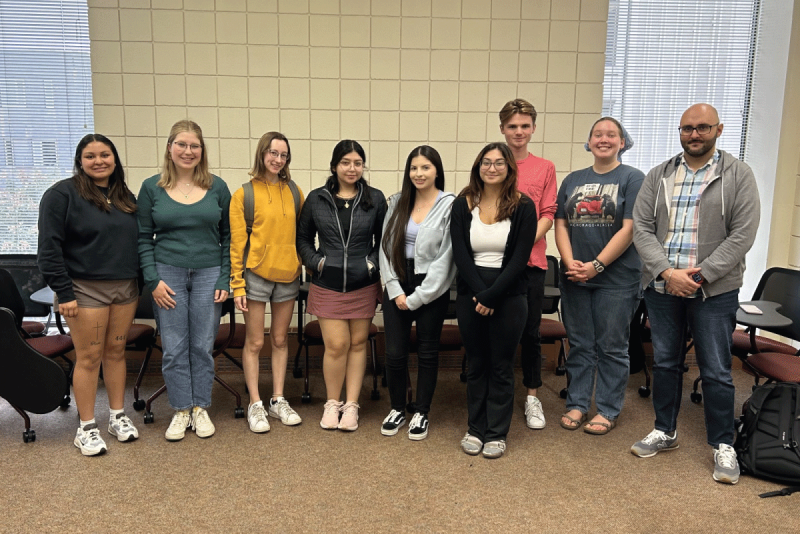
Students in Escobedo's fall 2023 Immigration in the 20th Century United States course, from left to right: Char Romero-Rodriguez, Annie Mulvihill, Pascale Correa-Bruzzese, Melanie Torres-Godoy, Ariana Rubi, Kai Sato, John Banks, Addie Lattof and Salvo Cimmino.
In her class on the history of immigration in the 20th century United States, Associate Professor of History Liz Escobedo had long incorporated primary-source documents recounting lived immigrant challenges to connect her students with authentic voices from the past.
But in 2016, she sought to delve deeper by adding a service-learning component to her course. “The idea was to help students connect the past with the current plight of fellow humans who are crossing our borders, practice empathy and apply the kind of critical thinking that transcends the headlines,” she said.
Research on local immigrant-support organizations led her to Casa de Paz, a nonprofit dedicated to reuniting immigrants being recently released from the Immigration and Custom Enforcement (ICE) detention center in Aurora with family members, friends and sponsors awaiting them in the U.S. Escobedo contacted then Casa Executive Director Sarah Jackson and arranged for students to begin volunteering at Casa the following academic year.
After the first quarter, Escobedo knew she was onto something. “Students were having life-changing experiences with migrants,” she said. She decided to expand the service-learning opportunity to include additional courses within the broader College of Arts, Humanities & Social Sciences (CAHSS) community.
Building a CAHSS Network of Scholars and Students
Escobedo began reaching out to colleagues in different disciplines who offered classes on immigration such as Sociology Professor Lisa Martinez and Anthropology Associate Professor Alejandro Cerón and Spanish faculty Sergio Macias, Susan Walter and Lina Reznicek-Parrado. They too, were interested in involving their students in volunteering with Casa, and the “Casa de Paz Learning Community” was born.
“It became a network of scholars offering classes on immigration and the throughline is students volunteering with Casa,” Escobedo said. Over the years, student service has expanded to include visitations with immigrants currently detained at the detention center, some of whom are later released and some of whom are eventually deported.
Martinez developed her class “Deportation Nation” specifically to include a Casa de Paz volunteer component.
“The idea was to help them to understand a very complex issue in a way that isn’t often presented,” she said. “As a sociologist researching immigration, I always try to contextualize this issue in terms of structural processes. We spend the first part of class discussing the major theoretical frameworks to understand how immigration has changed over time and we encourage students to go into the volunteer experience with open eyes.”
"These connections with students provide a lifeline to the outside world that can help them endure the difficulties of being separated from their families in a prison-like environment.”
Casa de Paz Volunteer Coordinator Greg Mortimer oversees the detention center visitation program and “has been so helpful and instrumental in creating pathways for students to meaningfully connect with migrants,” Escobedo explained. Mortimer visits class at the beginning of the quarter and provides training on what to expect and how to troubleshoot when working with migrants. He also coordinates and often accompanies students on their visits to the detention facility.
"DU students have been filling critical volunteer roles with Casa de Paz for years,” Mortimer said. “They have been the lifeblood of our visitation program the last couple of years, as they have been the primary source of volunteers since we restarted the program, post-COVID, in 2022. A number of students have continued to visit our detained friends, long after their classwork is finished. I can't sufficiently express my appreciation for them."
Visiting immigrants at the detention center also enables students to critically examine the popular misconceptions and stereotypes promulgated about immigrants and “focuses on the human side of immigration policy in a way a soundbite can’t,” according to Escobedo.
Galvanized by the experience, some students become interested in pursuing legal careers specializing in immigration and/or working for immigrant-advocacy organizations, according to Escobedo and Martinez. As for the migrants, “these connections with students provide a lifeline to the outside world that can help them endure the difficulties of being separated from their families in a prison-like environment,” Escobedo said.
Inspired by Martinez’ class, former student Carly Howenstein who graduated in 2019 went on to seek a career in immigrant advocacy and has been serving as a legal advocate with the nonprofit organization Rocky Mountain Immigrant Advocacy Network (RMIAN) for the past five years.
“Professor Martinez's class exposed the injustices of the immigration system,” she said. “Volunteering with Casa de Paz exposed the inhumanity of immigration detention. The two paired together, allowed me to see the system from a human perspective. Through volunteering for Casa de Paz and working for RMIAN, I have met some of the strongest, most kind and resilient individuals, people who are looking for the opportunity to tell their story and fight for their safety.”
Illuminating the Real-World Immigrant Experience
Although students may initially feel overwhelmed by the gravity of migrants’ situations, unsure about their abilities to help and self-conscious about the privileges they may have had in their own lives, over the quarter Escobedo and Martinez see their confidence grow, in sync with their compassion.
"Students offer immigrants a “small slice of hope. Many students are surprised to realize how much they have in common with the people they’re working with who are often close in age and may enjoy the same music or pastimes.”
“They realize they’re part of something bigger, a community that believes in the power of treating immigrants with dignity and respect,” Escobedo said. Students offer immigrants a “small slice of hope. Many students are surprised to realize how much they have in common with the people they’re working with who are often close in age and may enjoy the same music or pastimes.”
Students choose from a menu of volunteer options, Martinez explained. “We give students flexibility in how they want to be engaged based on their schedules, comfort levels, interests and skill sets. What’s been great is to see students jump into the more challenging options like the detention center visits or accompanying released migrants and helping them reconnect with their families.”
Student Annie Mulvihill, a double major in history and theatre with minors in Media, Film & Journalism Studies (MFJS) and Socio-Legal Studies slated to graduate in 2026, credits volunteering in Escobedo’s class with changing her understanding of U.S. immigration.
She realized that "without Casa, the people being released would have to figure out how to get from Aurora to another part of the country with absolutely zero help. It helped me understand how important it is to learn history, how our past can be directly applied to current events and especially how our country’s history with immigration has informed how these centers work today.”
Rooting Today’s Immigration in Historical Context
Throughout Escobedo’s class she strives to help students connect their volunteer experience back to the history of immigrants in the United States. “Not all the vitriol that we hear about immigrants today is particularly new, especially when it comes to racialized communities from Africa, Latin American and even Southern and Eastern European countries who also were presumed to be taking American jobs,” she said.
She cites the example of Chinese laborers who were restricted from immigrating to the United States from the 1880s to the early 1940s and held in detention on Angel Island in the San Francisco Bay. “Inscriptions carved into the detention center walls of the Angel Island center explain the hardships they endured and provide insight to future generations today.”
Accommodating the Growing Needs of Today’s Immigrants
Students’ volunteer roles have expanded over the years to help accommodate the increasing numbers of migrants being released from the detention center at once. “The detention center will call Casa to inform them they are releasing 30-40 immigrants at a time,” Escobedo said. Students and other volunteers meet migrants and walk them over to Casa de Paz just a few blocks away.
Martinez and Escobedo require students to keep a journal reflecting on their volunteer work with Casa. “By the time I get to the end of the quarter and am reading and grading those journals, I’m able to see the amount of learning and growth in understanding the volunteer experience has given them — that’s been the most rewarding piece,” Martinez said.
According to Escobedo, students “come to me well after a class is over to say this was a life-changing experience, the experience that mattered most in their time in college or that it changed their life trajectory to continue to work in immigration advocacy. Watching students engage with members of our community in meaningful ways to provide critical assistance has been one of the most rewarding experiences I’ve had at DU."
